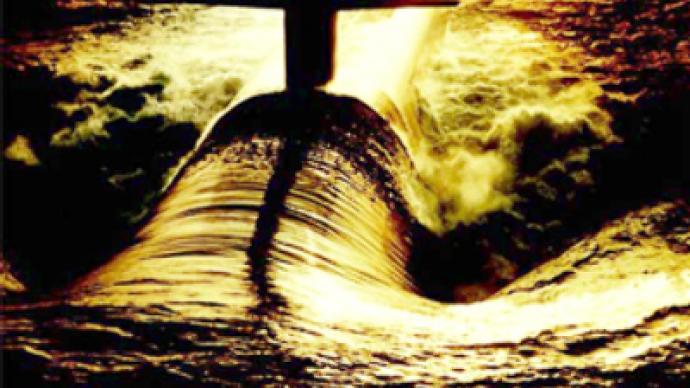For the U.S. submarine fleet, it’s still a Cold War

America’s strategic submarine fleet, armed with Trident II ballistic missiles, spends more time these days in the deep sea than they did during the Cold War.
The(FAS) has published information indicating that 14 American Ohio class submarines conducted 31 deterrent patrols in 2008 which lasted, for every submarine, longer than during the years of the US-USSR military stand-off.
If some twenty years ago American submarines were spending 50-70% of the year offshore, nowadays it could be as high as 90% of the year.
Such extensive use of submarines has become possible after introducing a two-crew system, when Blue and Gold crews replace each other after every patrol, thus making it possible to stay on alert status practically all year long.
Annually, the American nuclear submarine fleet conducts more patrols than Russian (2008 – three times the number of patrols of the Russian navy), French, Great Britain’s and the Chinese combined, though it must be noted that the Chinese are just preparing to put their nuclear submarines on deterrent patrols.
On average, one US patrol could last from 60 to 90 days
Altogether, beginning in 1960 when America’s first nuclear-powered submarine, George Washington (SSBN-598), carrying ballistic missiles, put off from Charleston, S.C., until the end of 2008, American ballistic missile submarines have conducted 3,814 patrols.
Each year the number of patrols was different but the year 1967 set a record with 131 patrols.
In 1979-1981, the decommissioning of outdated American nuclear submarines led to a factual halt of patrolling in the Pacific Ocean and recommenced only with the current Ohio class submarines coming into service.
In the early 1990s, the decommissioning of old submarines cut the American deterrent patrols in the Atlantic Ocean by 60%. It was fully resumed with the commissioning of more Ohio class submarines in late 1990s.
Today, the majority of U.S. nuclear submarine patrols are being conducted in the Pacific Ocean.
Starting in 2000, four Ohio submarines were transferred to conventional arms use while four others were modernized to be re-armed with the newest Trident II D5 ballistic missiles.
On February 19, 2009 the US Joint Chiefs of Staff congratulated the crew of the Ohio class submarine, the Wyoming, for their successful completion of their 38th patrol, which became the one-thousandth since 1982 in the history of the Ohio class nuclear submarines.
Twelve operational American nuclear subs (2 are always in pre-established overhaul) have over 1,100 nuclear warheads to deter nuclear attack against the US.
All major nuclear powers, including the US, Russia, France, Britain, China and India, have announced plans to build more nuclear-powered submarine missile carriers since sea-based nuclear weapons are considered the most reliable and ready for a sudden attack as they remain part of symbolic nuclear Triad.
The FAS report poses the question whether the Obama administration really wants a “dramatic reduction” of nuclear weapons worldwide. If so, then it must send signals to other members of the Nuclear Club, since extensive patrolling by nuclear ballistic missile submarines is counterproductive as it indulges the modernization of nuclear forces by other countries, making nuclear disarmament more difficult to achieve.











